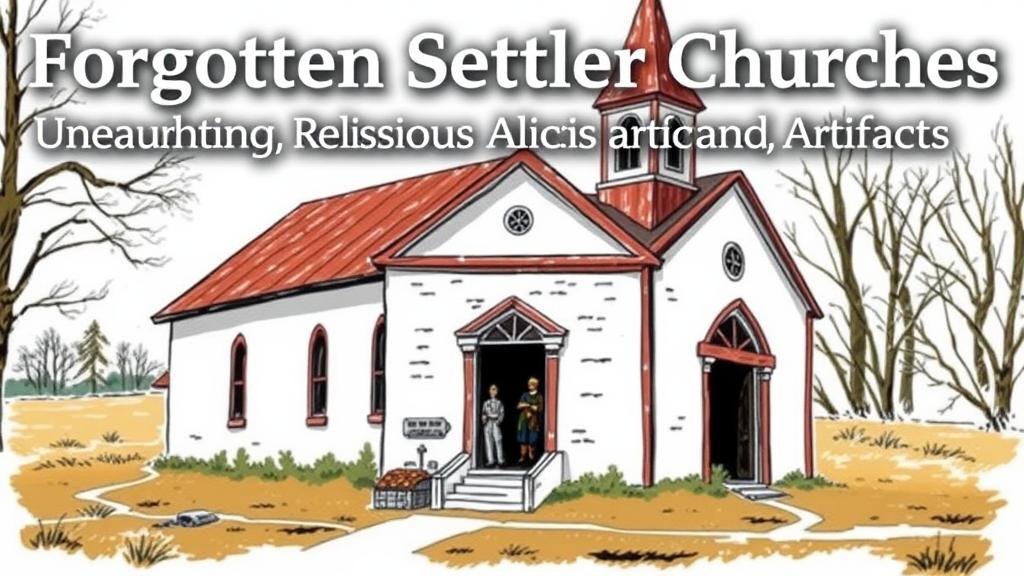Forgotten Settler Churches: Unearthing Religious Relics and Artifacts
Forgotten Settler Churches: Unearthing Religious Relics and Artifacts
The study of forgotten settler churches provides significant insights into the cultural, social, and spiritual life of early communities. This article aims to explore the historical context, architectural significance, and the artifacts associated with these religious edifices, drawing on specific examples from various regions across North America.
Historical Context
Settler churches emerged in the 18th and 19th centuries, primarily established by European immigrants seeking refuge and a sense of community in the New World. By studying these churches, researchers can better understand the migratory patterns and religious inclinations of early settlers. For example, the first Protestant church in North America, the Old South Meeting House in Boston, Massachusetts, was established in 1729 and played a pivotal role in the American Revolution as a meeting point for anti-British sentiment.
The Architectural Significance of Settler Churches
Settler churches vary widely in architectural style, reflecting the diverse backgrounds of their founders. Many early churches were built utilizing the materials readily available in their surroundings. For example, the log churches of the Appalachian region built in the late 1800s, such as the Historic Enoch’s Chapel in North Carolina, represent a unique application of local resources in church construction.
- Simple Log Structures: Churches often constructed from hewn logs, featuring gable roofs and minimal decoration.
- Neo-Gothic Influences: With the influx of immigrants, some churches adopted ornamental designs, as seen in St. Mary’s Church in Albany, New York, built in 1855.
Unearthing Artifacts and Relics
Artifacts recovered from forgotten settler churches often provide invaluable links to the past. These items include religious texts, liturgical items, and everyday objects that reflect the communitys life and practices. For example, during excavations at the site of the old Zion Lutheran Church in Pennsylvania, archaeologists uncovered 19th-century baptismal records and handmade communion vessels, which offered evidence of the community’s religious observances and cultural identity.
Significant Case Studies
Throughout North America, various case studies illustrate the importance of unearthing settler churches. Two notable examples include:
- The reconstructed Trinity Church in New York City: Originally built in 1698, this church has undergone multiple reconstructions, and excavations have revealed colonial burial sites and grave markers from the 18th century.
- The abandoned St. Mary’s Church in St. Louis, Missouri: Established in 1864, its recent redevelopment has unearthed artifacts indicative of the German immigrant experience, including carved wooden altar pieces that illustrate their religious practices.
Interdisciplinary Approaches to Study
The study of these churches necessitates an interdisciplinary approach, integrating theology, archaeology, and history. By combining these fields, researchers can reconstruct the societal narratives surrounding these religious spaces. Techniques such as dendrochronology, which helps date wooden artifacts, and GIS technology for site mapping have proven instrumental in unearthing patterns of settlement and usage over time.
Conclusion and Actionable Takeaways
Unearthing forgotten settler churches provides profound revelations about the lives of early settlers, their belief systems, and the material culture they left behind. The preservation of these sites and artifacts is not only crucial for historical academic research but also for future generations to appreciate the complex narratives embedded in these communities.
Future research should focus on:
- Conducting more comprehensive archaeological surveys of settled regions.
- Collaboration with local historical societies to study oral histories associated with these churches.
- Utilizing advanced technology for improved data collection and analysis.
In summary, forgotten settler churches serve as critical links to understanding the past, warranting further exploration and preservation efforts to safeguard these vital cultural assets.



